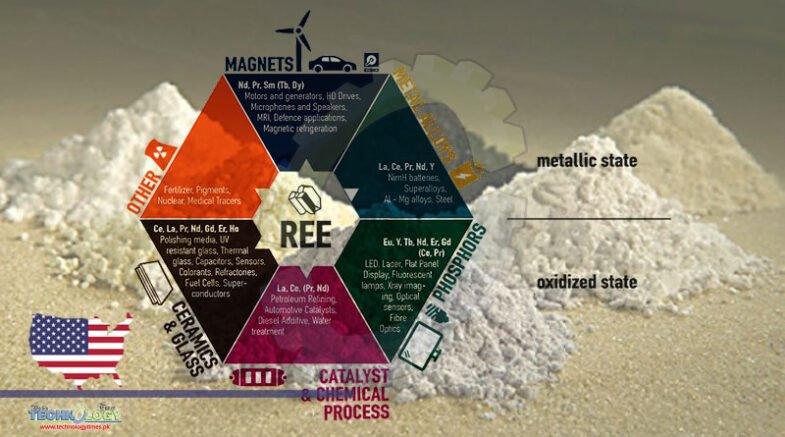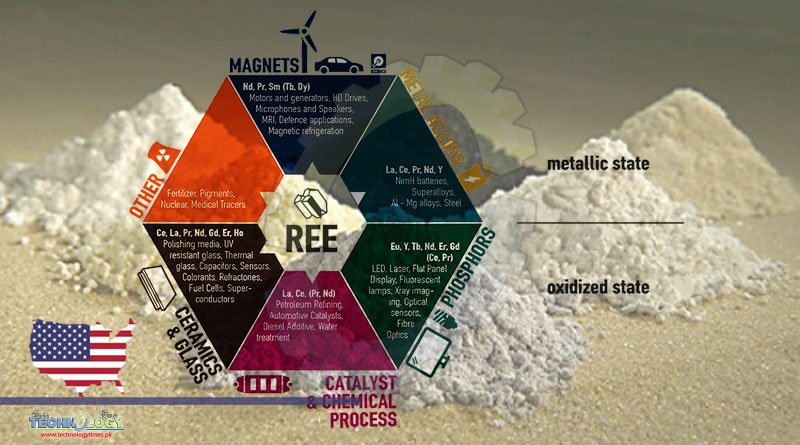For the first time, scientists formed a charged rare earth molecule on a metal surface and rotated it using scanning tunneling microscopy.

“Rare earth elements are essential for high-tech applications such as cell phones, HDTVs, and others. This is the first time that rare-earth complexes with positive and negative charges have been formed on a metal surface, as well as the first time that atomic-level control over their rotation has been demonstrated,” said team lead Saw-Wai Hla, who is a scientist at Argonne and a professor of physics and astronomy in the College of Arts and Sciences at Ohio University.
Scanning tunneling microscopy was used by researchers from Ohio University, Argonne National Laboratory, and the University of Illinois at Chicago to form a charged rare earth molecule on a metal surface and rotate it clockwise and counterclockwise without affecting its charge. Their findings open up new avenues for future research into the atomic-scale manipulation of materials critical to the future, from quantum computing to consumer electronics.
The experiment was conducted at both Argonne and Ohio University, with two different low-temperature scanning tunnelling microscopy (STM) systems used. STM experiments require an ultrahigh vacuum and a temperature of about 5 degrees K (-450 degrees Fahrenheit). The sample molecules were about 2 nanometers in size. “The same results were obtained in both locations, ensuring reproducibility,” Hla explained. Students from the Hla group affiliated with the Nanoscale & Quantum Phenomena Institute run the Ohio lab. The researchers’ findings were recently published in the journal Nature Communications.
The researchers created rare-earth complexes by combining positively charged Europium base molecules with negatively charged counterions on a gold surface. The complexes were rotated by applying an electric field emanating from the STM tip and using the counterion beneath as a pivot. The researchers demonstrated complete directional control of these rare-earth complexes’ rotation.
Eric Masson, professor and Roenigk Chair of Chemistry at Ohio University and one of the project’s co-investigators, designed the rare-earth complexes, which were synthesised by his group at Ohio University. Scientists at Argonne and Anh Ngo’s group, an associate professor of Chemical Engineering at the University of Illinois at Chicago, used Argonne’s BEBOP, the most powerful supercomputer in the United States to date, to perform density functional theory calculations. The calculations reveal only a negligible amount of charge transfer at the molecule-substrate interface, which means the complexes remained charged on the surface.
Hla and colleagues use a nascent experimental method known as synchrotron X-ray scanning tunnelling microscopy at the Advanced Photon Source in Argonne to determine the chemical state of the Eu ion in the complexes adsorbed on the surface, where they confirm that the molecules are positively charged on the gold surface. The structure is depicted in STM images as a distorted triangular shape with three arms. An STM movie acquired with a record number of 8,000 spectroscopic frames demonstrates the incorporation of the counterion beneath. The Hla group then used STM manipulation to demonstrate the control rotation, which can rotate clockwise and counterclockwise at will.
“These findings may be useful for the development of nanomechanical devices in which individual units in the complex are designed to control, promote, or restrict motion,” said Hla. “We have demonstrated the rotation of charged rare-earth complexes on a metal surface, which now allows one-complex-at-a-time investigations for their electronic, structural, and mechanical properties.”
Originally published at SciTechDaily
